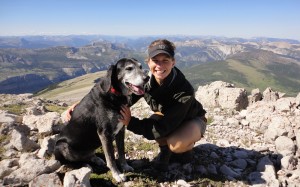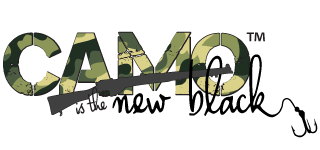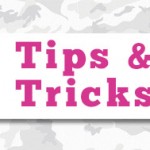

Jill Beauchesne Alban
It’s spring in Montana. Two weekends ago, I couldn’t get my car out of the driveway because of a blizzard that dumped close to two feet of snow in Missoula. Then, in a matter of days, warm temperatures melted most of the snow and bumped up local rivers to what the fishing guides call “chocolate milk.” Thankfully, the water started going down only a few days later, coinciding with a spate of days in the upper 50s.
When the weather gets a bit warm, the rivers around here start to beckon me, like they’re whispering my name. It hasn’t always been this way. When I first moved to Montana 10 years ago, I was mystified by the mania of fly-fishing and the way it drove my friends to wake up at 6 AM to hit a morning hatch. I much preferred spending my March Saturdays on the ski hill or at a hot spring. But somewhere along the way, I began to understand the lure of the deep, green water. Knowing the fish were there—knowing they might rise to take whatever I had on the line—meant that these Montana rivers were so much more than beautiful backdrops. These rivers were living, breathing, writhing. And I could feel them—I could be a part of them for the briefest of moments—if I could just entice their inhabitants to strike my fly.
Only trouble? Fly-fishing is hard. Really hard.
Three days ago, I woke before sunrise to drive from Missoula to Helena for a work event. It was Friday—the end of a long week—and I was ready for some down time. As I drove, the sun broke across the far ridges, sending dawn’s purple shadow across the Clark Fork River. The water seemed sleepy. As if it were taking a break, vulnerable, dulled to a lazy meander by a long winter and inactivity. It was March 14. There wasn’t a cloud in the morning sky. It was going to be a warm afternoon.
“Today’s the day,” I thought to myself.
That afternoon, I drove back to Missoula. My first stop was at the regional Fish and Wildlife office, where I spent a little over 20 bucks on my annual Conservation and Fishing License. I turned up some loud music on the stereo and sped home with the windows down. At the house, I quickly changed into my ratty fishing pants and vest, grabbed my fly rod, and urged my dog into the backseat. Then, we turned back around to hit the Clark Fork before dark.
I fished for two hours, alternating between a bead head nymph, a san juan worm, and a streamer. Zilch. Nada. By 6 PM, the blue sky had turned a mean gray, and rain started to slant from the sky. Abe watched me from the riverbank, his fur matted and wet. We headed back to the car. On the way home, I stopped by the gas station and bought myself a beer. That night, I watched how-to videos on nymph fishing in my kitchen as rain pelted the windows.
On Saturday morning, my husband and I met up with a friend to fish the Bitterroot River, a big tributary of the Clark Fork. It was another clear morning, another river at a good level. But it was still cool, meaning I couldn’t tie on a trusty dry and get the job done. No—instead, I’d have to resort to nymphing or streamer fishing. Neither approach made me very comfortable. I never knew just how long to make the dropper line or how fast to strip the streamer. Still, I rigged up appropriately, let myself feel hope that I’d actually land something on a day when nary a fish could be seen on a rise.
Zilch. Nada. By 5 pm, the clouds were moving in again. I’d moved upstream from the two boys where I’d found a cool little cutbank to toss under. The two dogs had accompanied me, tugging at sticks and unearthing old carcass. I tried different nymphs, weird techniques. I cast downstream, upstream, cross-stream. Nothing. I tromped back through the brush toward the guys, trying to convince myself that nymph fishing was harder than dry fly fishing.
Third time—Sunday—was supposed to be the charm. Grant and I were headed back to Helena for a quick work errand, then planned to hit the Missouri River—the river that’s usually a sure thing—for the afternoon. We pulled in to the access, threw on our waders, and crossed the heavy, cold stream toward an island where we’d had some luck last summer. The water was like ice on my legs, and the river level was nearly to my waist. Still, we hiked in and around the willow branches and matted grasses, casting into the deep riffles along the banks. Behind us, drift boats and rafts coasted by, anchoring to the best holes against the shore. We hit every deep riffle but were coming up short. Finally, I waded out to just under my sternum. My legs were aching from cold, but my cast was on. I took roll cast after roll cast, hitting the seam just right, letting the nymph sink, mending the line twice or three times in one drift. I moved around, cast downstream, tried again and again. By the end, I couldn’t take the cold. I shuffled back out of the deep water toward the shore, my feet and thighs numb. We walked back to the car, laughing at our inability to catch anything, making silly jokes about Abe as he shook the water from his fur and tail.
It was hard to stomach. My first fishing weekend of the season was a three and out. Maybe I should have added more split shot, used a different strike indicator, found a different wet fly. Maybe I should stick to fishing in the summer months during dry fly season. Maybe I was in over my head.
I struggled out of my waders and leaned against the truck for a second, gazing out over the Missouri. A flock of goldeneyes held against the current in the middle of the river, poised and buoyant, each diving after the other beneath the water’s mirrored surface, disappearing for several seconds into some netherworld, some magical place, some haven where they found food, solace, and sustenance. I remembered other sights from the past several days: on the Clark Fork, where Abe and I had watched a kingfisher shriek back and forth across the stream; on the Bitterroot, where a dipper bounced and darted to dozens of new crannies within an eroded streambank as I stood across, shivering in the water, watching it.
I closed my eyes and breathed it all in. The river. Having a fish on the line—that act of laying a hand on something totally beyond myself—is pretty close to feeling a part of an invisible world. But perhaps there are other ways to feel that—to know the river. Maybe I did get there these last few days, after all.
Jill Beauchesne Alban is a writer and conservation professional living in Missoula, MT. Her poetry has been published in Octopus, No Tell Motel, 14 Hills, and more, while her nonfiction has appeared in various conservation blogs and websites. She is currently at work on her first memoir, an account of an 8-day solo trek into the Bob Marshall Wilderness. Contact her at jill@clarkfork.org and follow her @clarkfork.






[…] Check out Jill’s first post here. […]